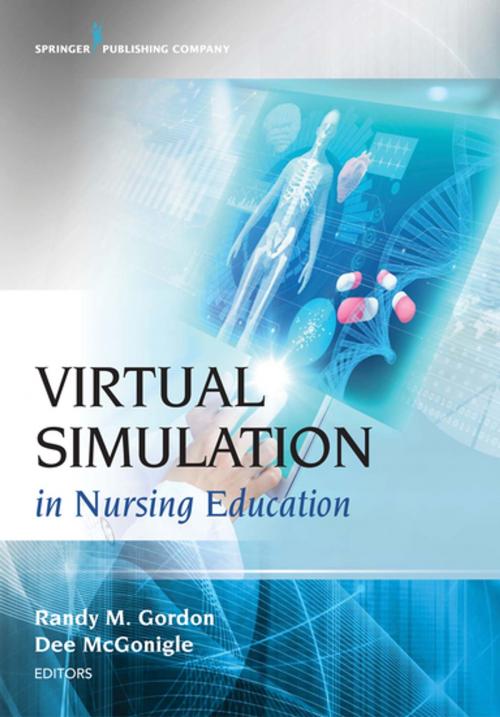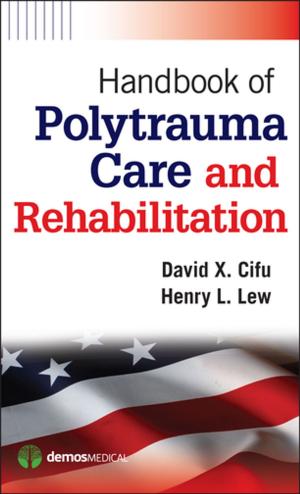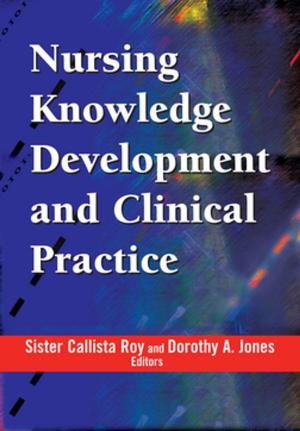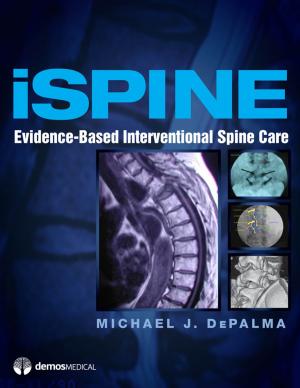Virtual Simulation in Nursing Education
Nonfiction, Health & Well Being, Medical, Nursing, Issues, Reference| Author: | Randy M. Gordon, DNP, FNP-BC, Dee McGonigle, PhD, RN, CNE, FAAN, ANEF | ISBN: | 9780826169648 |
| Publisher: | Springer Publishing Company | Publication: | April 28, 2018 |
| Imprint: | Springer Publishing Company | Language: | English |
| Author: | Randy M. Gordon, DNP, FNP-BC, Dee McGonigle, PhD, RN, CNE, FAAN, ANEF |
| ISBN: | 9780826169648 |
| Publisher: | Springer Publishing Company |
| Publication: | April 28, 2018 |
| Imprint: | Springer Publishing Company |
| Language: | English |
Learn best practices for successfully integrating virtual simulation into nursing curriculum
Written for students in nurse educator programs, nursing faculty, and other health care educators, Virtual Simulation in Nursing Education unpacks the necessary tools for successful integration of technology into nursing programs. The benefits of virtual simulation in nursing education are innumerable: less expensive, easier to access, and location independent compared with nondigital simulations. Yet the evolving nature of both curricula and technology complicates the implementation of a coherent integration plan. Success requires a coordinated impetus from faculty, administrators, and students to enrich a technologically enhanced learning landscape. With a practical, how-to focus, this book describes the unique dynamics and demands of using virtual simulation as a core teaching method and focuses on the best practices for integrating this technology into the nursing curriculum.
The first text to detail systematic strategies for faculty, students, and administrators, Virtual Simulation in Nursing Education examines the most effective teaching methods and activities, discusses challenges and pitfalls to integrating virtual simulation into a curriculum, and examines how learning outcomes are met. With an eye toward motivating students to embrace technology throughout their careers, content illustrates how students can leverage technologies to maximize learning and support practice. Replete with savvy tips from virtual simulation experts, chapters include exemplars that present the models in real-life scenarios, and clinical reasoning questions to reinforce learning.
Key Features:
- Accompanied by an Instructor’s Manual and PowerPoint slides
- Teaches students of nurse educator programs, nurse educators, and administrators how to successfully use virtual simulation
- Provides useful tools, best practices, and savvy strategies for integrating technology into the curriculum
- Includes examples and clinical reasoning questions to reinforce content
- Demonstrates how students can maximize learning and support practice with virtual simulation technology
- Provides a firm foundation for students to embrace technology throughout their careers
Learn best practices for successfully integrating virtual simulation into nursing curriculum
Written for students in nurse educator programs, nursing faculty, and other health care educators, Virtual Simulation in Nursing Education unpacks the necessary tools for successful integration of technology into nursing programs. The benefits of virtual simulation in nursing education are innumerable: less expensive, easier to access, and location independent compared with nondigital simulations. Yet the evolving nature of both curricula and technology complicates the implementation of a coherent integration plan. Success requires a coordinated impetus from faculty, administrators, and students to enrich a technologically enhanced learning landscape. With a practical, how-to focus, this book describes the unique dynamics and demands of using virtual simulation as a core teaching method and focuses on the best practices for integrating this technology into the nursing curriculum.
The first text to detail systematic strategies for faculty, students, and administrators, Virtual Simulation in Nursing Education examines the most effective teaching methods and activities, discusses challenges and pitfalls to integrating virtual simulation into a curriculum, and examines how learning outcomes are met. With an eye toward motivating students to embrace technology throughout their careers, content illustrates how students can leverage technologies to maximize learning and support practice. Replete with savvy tips from virtual simulation experts, chapters include exemplars that present the models in real-life scenarios, and clinical reasoning questions to reinforce learning.
Key Features:
- Accompanied by an Instructor’s Manual and PowerPoint slides
- Teaches students of nurse educator programs, nurse educators, and administrators how to successfully use virtual simulation
- Provides useful tools, best practices, and savvy strategies for integrating technology into the curriculum
- Includes examples and clinical reasoning questions to reinforce content
- Demonstrates how students can maximize learning and support practice with virtual simulation technology
- Provides a firm foundation for students to embrace technology throughout their careers















